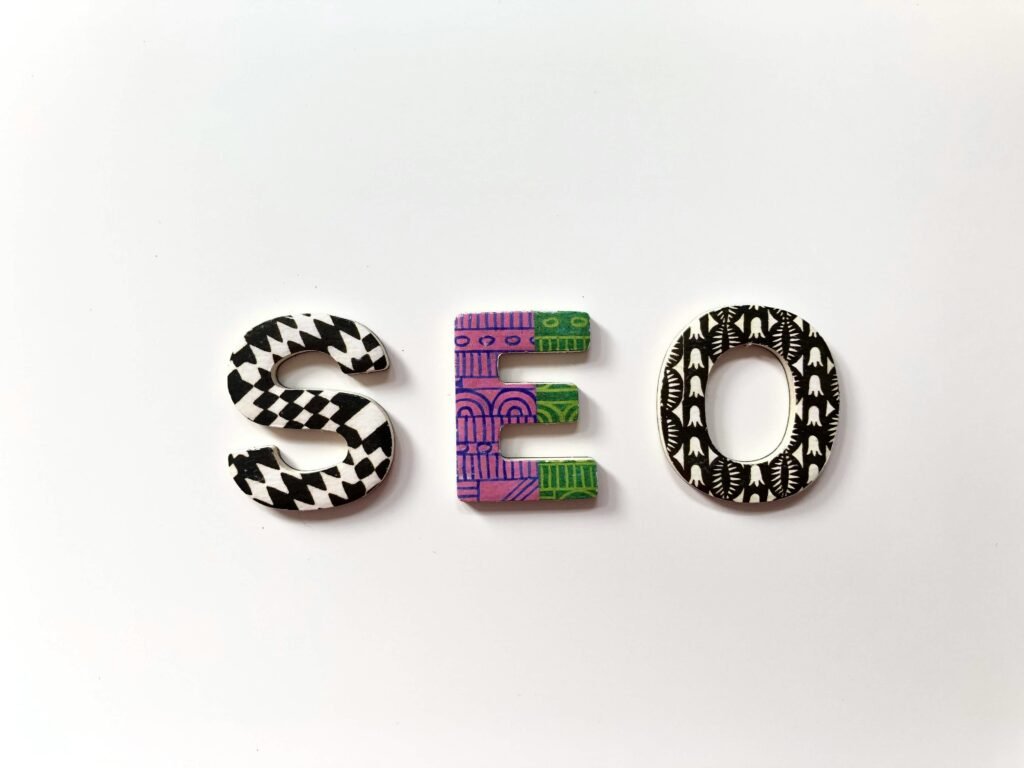Traditional Marketing Fundamentals
Definition and Evolution
Traditional marketing refers to marketing strategies that do not rely on the internet for advertising purposes. This approach has evolved over decades, utilizing various media channels, such as television, radio, print advertising (magazines and newspapers), and outdoor advertising (billboards and posters) to promote products and services. You can learn more about the specific tactics involved in this method by checking our resource on traditional marketing methods.
Traditional marketing focuses on reaching a broad audience through standardized messaging rather than customized campaigns, making it distinct from digital marketing strategies. While digital marketing uses the internet and social media, traditional methods remain vital in the marketing landscape, providing a sense of familiarity and reliability to consumers (Simplilearn).
Cost vs. Effectiveness
In the realm of marketing strategies, traditional methods tend to be more expensive compared to their digital counterparts, often resulting in a lower effectiveness rate. As stated in research, traditional marketing is less effective than digital marketing, particularly when considering the rapid conversion rates and dynamic engagement digital platforms offer.
A breakdown of traditional marketing costs versus effectiveness is outlined in the following table:
| Marketing Channel | Average Cost per Campaign | Effectiveness Rating (1-10) |
|---|---|---|
| Television Advertising | $300,000 – $5 million | 6 |
| Print Advertising | $1,000 – $100,000 | 5 |
| Radio Advertising | $20,000 – $200,000 | 4 |
| Outdoor Advertising | $2,000 – $50,000 | 7 |
This table illustrates that while traditional marketing channels can be costly, they may still resonate with specific consumer demographics. Strategies like direct mail remain influential in consumers’ purchasing decisions, as evidenced by a 2019 study showing that a significant portion of consumers considers direct mail items when nearing a purchase decision (HubSpot Blog).
By comparing traditional marketing to digital approaches, you gain insight into their respective advantages and challenges. For more information about the nuances between these methods, explore our section on traditional vs. digital marketing.
Comparing Traditional vs. Digital Marketing
Understanding the differences between traditional and digital marketing is crucial for CEOs, business owners, CMOs, and marketing executives as you strategize your marketing efforts. Each method offers unique benefits and challenges, particularly concerning conversion rates, engagement, and communication styles.
Conversion Rates and Engagement
Conversion rates in marketing refer to the percentage of consumers who take a desired action, such as making a purchase or signing up for a newsletter. While traditional marketing often comes with higher costs, it is generally less effective than its digital counterpart, as highlighted by the need for more tailored engagement strategies (Simplilearn).
In contrast, digital marketing techniques yield faster conversion rates and dynamic engagement opportunities. The ability to track investment returns is another critical advantage of digital marketing, enabling marketers to make data-driven decisions that enhance campaign effectiveness.
| Marketing Method | Average Conversion Rate (%) | Engagement Style |
|---|---|---|
| Traditional | Lower | One-way communication |
| Digital | Higher | Two-way communication |
Communication Styles
Traditional marketing predominantly involves static, one-way communication where brands convey messages to consumers without immediate feedback. This approach often leads to a standardized message that may not resonate well with individual audience members.
On the other hand, digital marketing fosters interactive conversations between brands and consumers. This two-way communication allows for personalized engagement, essential for today’s consumers who prefer tailored offers. Studies indicate that 72% of consumers engage only with brands that customize their marketing messages based on individual interests (HubSpot Blog).
Moreover, as Baby Boomers increasingly engage with digital platforms, the landscape of marketing communication continues to evolve. Reflecting on the preferences of this demographic can enhance the impact of traditional marketing efforts while integrating digital marketing strategies effectively.
In summary, the distinction between traditional and digital marketing is significant. Optimizing your strategy involves understanding conversion rates, engagement styles, and the nature of communication. This knowledge helps you allocate resources efficiently, particularly when considering traditional marketing tactics that align with your overall strategy.
Successful Traditional Marketing Campaigns
In the realm of traditional marketing, certain campaigns stand out due to their effectiveness and memorable impact. This section highlights two iconic campaigns from Nike and Dove, illustrating how traditional marketing techniques can drive significant results.
Nike’s “Just Do It”
Launched in 1988, Nike’s “Just Do It” campaign revolutionized the sports marketing landscape and remains one of the most successful traditional marketing efforts to date. The campaign featured stories of both professional and amateur athletes, creating an emotional connection with a diverse audience. This approach not only boosted Nike’s brand visibility but also encouraged active lifestyles among consumers. The powerful slogan resonated with individuals at all levels of athleticism, motivating them to push their limits.
| Campaign Aspect | Details |
|---|---|
| Launch Year | 1988 |
| Target Audience | Athletes and fitness enthusiasts |
| Core Message | Empowerment and motivation |
| Notable Features | Emotional storytelling |
Nike’s campaign set a precedent for future marketing endeavors by showcasing the importance of creating a narrative that aligns with the brand’s values. For more on successful traditional marketing efforts, consider exploring other traditional marketing examples.
Dove’s “Real Beauty”
Dove’s “Real Beauty” campaign, which debuted in 2004, aimed to challenge the conventional beauty standards portrayed in advertising. This initiative featured real women of various shapes, sizes, and ethnicities, promoting diversity and self-confidence among its audience. The campaign fostered a sense of community and authenticity, allowing consumers to relate to the brand on a deeper level.
| Campaign Aspect | Details |
|---|---|
| Launch Year | 2004 |
| Target Audience | Women and children |
| Core Message | Self-acceptance and diversity |
| Notable Features | Use of real women instead of models |
A significant factor behind the campaign’s success was its ability to spark conversations about beauty standards in society, driving engagement and loyalty. This approach exemplifies how traditional marketing can adapt to resonate with contemporary cultural shifts. For insights into implementing similar strategies, refer to our section on traditional marketing strategies.
Both the Nike and Dove campaigns highlight the effectiveness of traditional marketing methods in establishing a strong brand presence and fostering consumer connections. Integrating these lessons into your marketing strategy can significantly impact your brand’s resonance within the market.
Insights on Generational Marketing
Understanding the unique characteristics and preferences of different generations is crucial for creating effective marketing strategies. Two of the most influential segments in today’s market are Gen Z and Millennials. This section explores their defining traits and how these impact traditional marketing.
Gen Z Characteristics
Gen Z, individuals born between 1997 and 2012, are known for being highly tech-savvy. They are the first generation to grow up with the internet and smartphones, making them adept at navigating digital environments. Key characteristics include:
- Value for Authenticity: Gen Z seeks genuine interactions with brands. They are more likely to support companies that demonstrate honesty and transparency (FiveCRM).
- Personalized Experiences: This generation prefers tailored messages and experiences, making personalized marketing essential for engagement.
- Social Media Engagement: Gen Z spends approximately 4.5 hours a day on social media, emphasizing the need for brands to utilize these platforms effectively to reach them.
| Characteristic | Description |
|---|---|
| Tech-Savvy | Grew up with digital technology |
| Values Authenticity | Supports brands that are transparent |
| Desires Personalization | Prefers customized messages and experiences |
Millennials Preferences
Millennials, born roughly between 1981 and 1996, share some similarities with Gen Z but have distinct differences in their preferences. Key points regarding Millennials include:
- Digital Natives: Like Gen Z, Millennials are also digital natives and rely heavily on digital channels for information and engagement (FiveCRM).
- Authenticity and Transparency: Similar to Gen Z, they value authentic relationships with brands and expect a level of transparency.
- Social Media Usage: Millennials spend about 3.8 hours daily on social media platforms, thus also warranting the use of these channels for marketing efforts.
| Characteristic | Description |
|---|---|
| Digital Native | Experienced in using technology extensively |
| Prefers Authenticity | Engages with brands that are clear and honest |
| Active on Social Media | Interacts with brands on social platforms |
Both generations exhibit a preference for social media marketing, thus it is vital for businesses to integrate traditional marketing strategies with digital components. Successful outreach to these demographics will involve leveraging platforms where they are most active and ensuring that the messaging aligns with their values of authenticity and personalization. For insights into bridging traditional and digital techniques, consider reviewing our articles on integrating traditional and digital marketing and traditional marketing strategies.
Effective Marketing Strategies
In today’s competitive landscape, effective marketing strategies are essential for engaging customers and driving sales. Among various approaches, social media marketing and direct mail remain impactful in reaching target audiences.
Social Media Marketing
Social media marketing continues to thrive, with approximately 3.7 billion active monthly users worldwide in 2023. The average U.S. adult spends over two hours per day on social media platforms (WordStream). This statistic illustrates the potential reach and engagement that social media offers.
Implementing a robust social media marketing strategy allows you to connect with your audience organically, fostering community and brand loyalty. Engaging content, consistent posting, and interactions can enhance brand visibility. You should also consider collaboration with influencers, as they can further expand your reach within specific demographics, especially among younger audiences such as Gen Z and Millennials, who are digital natives reliant on digital channels for information and engagement (FiveCRM).
| Social Media Platform | Average Daily User Engagement |
|---|---|
| 1.5 hours | |
| 30 minutes | |
| 20 minutes | |
| 30 minutes |
Direct Mail Influence
Despite the rise of digital marketing, direct mail remains a powerful tool for influencing consumer decisions. A 2019 study by Pebble Post found that consumers often consider direct mail, such as newsletters and postcards, when closer to making a purchase. Highlights from the study indicate that 67% of consumers relied more on direct mail due to social distancing guidelines during the pandemic.
Direct mail campaigns can effectively target local audiences, especially in conjunction with digital efforts. The tangible nature of snail mail can create a lasting impression on recipients, differentiating your message from the deluge of digital ads they encounter daily. Moreover, a BrightLocal study from 2019 revealed that 60% of consumers preferred calling local businesses over emails and websites, showing the continued value of personal interaction and outreach (HubSpot Blog).
| Direct Mail Benefits | Percentage of Influence |
|---|---|
| Increased Consumer Trust | 82% |
| Higher Engagement Rates | 60% |
| Stronger Personal Connection | 55% |
Incorporating both social media marketing and direct mail tactics can enhance your overall marketing strategy, making it crucial to find the right balance between traditional and digital methods. For more insights into the complete scope of traditional marketing, explore traditional marketing statistics and various other traditional marketing methods.
Marketing Budget Allocation Strategies
Proven Tactics vs. Innovative Strategies
In the realm of marketing budget allocation, there exists a balance between utilizing proven tactics and exploring innovative strategies. Your allocation should reflect a comprehensive strategy that embraces stability while also nurturing growth.
Following the 70/20/10 rule, it is advisable to allocate 70% of your marketing budget to established and effective marketing strategies. This ensures that you are investing in methods that have consistently yielded positive returns. The additional 20% should be reserved for exploring innovative strategies that can drive new opportunities and engage your audience in fresh ways. Finally, 10% of your budget can be dedicated to experimental initiatives. This allocation allows you to test new ideas and ultimately evaluate their impact on your overall marketing success (Improvado).
| Budget Allocation | Percentage |
|---|---|
| Proven Tactics | 70% |
| Innovative Strategies | 20% |
| Experimental Initiatives | 10% |
This structured approach fosters a culture of innovation while relying on effective methods to generate revenue.
Experimental Initiatives Ratio
The allocation towards experimental initiatives is critical for keeping your marketing strategy dynamic and relevant. By committing 10% of the overall marketing budget to experimentation, you open the door to testing new concepts that align with current market trends and consumer behavior.
Experimental initiatives allow for the exploration of new channels, technologies, and tactics that could enhance your overall marketing effectiveness. These activities can include incorporating emerging technologies such as Artificial Intelligence or exploring new communication platforms that resonate with your target demographic.
As you analyze traditional marketing statistics, be sure to consider the impact of these experimental initiatives on your overall marketing strategy. By measuring ROI and engagement levels, you can iteratively adjust your approaches and stay ahead of the competition.
To ensure that every dollar spent on marketing is justified, consider a variety of budgeting methods, including percentage of revenue, competitive parity, and objective-based budgeting. Each of these techniques can support your strategic planning, allowing you to allocate funds in a way that aligns with your business objectives (Improvado).
This strategic mix in your marketing budget will help you remain competitive and responsive in the fast-paced market landscape while adhering to the timeless principles of traditional marketing. Explore various traditional marketing strategies to find the best fit for your business model.
Marketing Budgeting Approaches
Effective marketing budgeting is essential for maximizing the impact of traditional marketing strategies. Two common approaches are the percentage of revenue method and competitive parity budgeting.
Percentage of Revenue
The percentage of revenue method is a straightforward approach where you allocate a certain percentage of your total revenue to your marketing budget. This method allows you to scale your marketing efforts based on your business’s financial performance. Typically, companies allocate between 5% to 10% of their revenue for marketing, although this can vary depending on the industry and business goals.
| Revenue Tier | Marketing Budget (%) |
|---|---|
| $0 – $1 million | 10% |
| $1 million – $5 million | 8% |
| $5 million – $10 million | 6% |
| $10 million and above | 5% |
This approach ensures that your marketing budget grows as your business grows, aligning expenditures with your overall financial health. However, it is essential to regularly evaluate this percentage to ensure it remains relevant compared to your competitors’ spending and market dynamics. For more insights on spending in marketing, explore our article on traditional marketing statistics.
Competitive Parity
The competitive parity approach involves aligning your marketing budget with that of your competitors. This method relies on analyzing the marketing expenditures of your competitors and ensuring that your spending is similar. By doing so, you can maintain a competitive edge in the market.
To implement this strategy effectively, you should gather data on your competitors’ marketing expenditures through industry reports, market research, and financial disclosures. You can then structure your budget based on their spending patterns.
| Competitor Profile | Estimated Marketing Budget (%) |
|---|---|
| Small Businesses | 5% – 7% |
| Mid-Sized Companies | 7% – 12% |
| Large Corporations | 10% – 15% |
While this method can help maintain competitiveness, it may also lead to inflated marketing costs if competitors are overspending. It is crucial to balance this method with an understanding of your unique business context and goals. Conducting a thorough analysis of your marketing strategies in relation to your competitors will help provide clarity.
For a comprehensive view of traditional marketing practices, consider reviewing our articles on traditional marketing techniques, traditional marketing strategies, and traditional advertising strategies.
Balancing Marketing Strategies
Traditional Methods Overview
When considering your marketing strategies, it is vital to understand the foundational elements of traditional marketing. Traditional marketing encompasses various approaches, including print advertisements, direct mail campaigns, radio and television broadcasts, yard signs, billboards, local media interviews, and community networking. These methods have been crucial in establishing brand identity and driving sales for many businesses.
To maximize your impact, you should leverage the strengths of traditional marketing alongside digital methods. Here is a brief overview of popular traditional marketing methods:
| Traditional Marketing Method | Description |
|---|---|
| Print Advertisements | Includes newspapers, magazines, and brochures. |
| Direct Mail | Sending promotional materials directly to potential customers. |
| Radio Broadcasts | Advertising through local or national radio stations. |
| TV Commercials | Using television for widespread brand messaging. |
| Billboards | Large outdoor advertisements targeting motorists. |
| Community Networking | Engaging with local organizations and events. |
For deeper insights into traditional marketing techniques, refer to our resources on traditional marketing methods and types of traditional marketing.
Online Product Order Considerations
In today’s digital age, your customers conduct their product research online before making a purchase decision. Recent data shows that Google processes 8.5 billion searches daily, indicating the substantial reliance people have on online platforms for research and shopping. Therefore, integrating traditional marketing with a robust online strategy is essential for success.
Visual products such as food, clothing, and home appliances frequently lead to online orders. To capture this market effectively, a strong digital presence is necessary, ensuring that your offerings are visible and easily accessible to potential customers. A well-executed digital marketing strategy drives traffic and enhances the return on investment.
When designing your marketing campaigns, consider how traditional marketing can complement your online efforts. Utilizing local media interviews and print materials can bridge the gap between online engagement and real-world interactions. For more on integrating traditional and digital methods, visit our page on integrating traditional and digital marketing.
Balancing your marketing approach by combining effective traditional and online strategies will help you engage your audience comprehensively and maximize your overall impact.





















